Wide-format Printing: Addressing workplace health and safety
by all | 15 September 2017 11:49 am
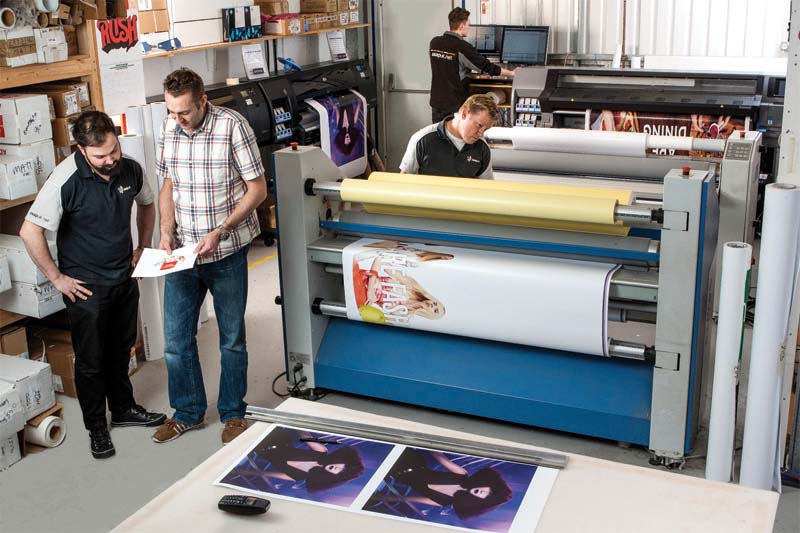 [1]
[1]Photo courtesy HP
By Allison Lundy
Successful business owners, including those in the wide-format printing industry, know safety is a key component in creating a thriving work environment. By keeping their employees healthy, business owners can save money, improve morale and foster a more efficient workplace.
Of course, safety is a matter not just of good business practices, but also of laws and regulations, of which there are a variety throughout Canada that impose certain standards on all work facilities. Keeping track of these rules can become overwhelming.
Fortunately, there are ample resources available to help wide-format printing businesses navigate health and safety issues.
From general to specific
Safety standards can cover quite a few areas. Some are more general, like criteria for facility conditions, how to deal with violence and harassment in the workplace or emergency response plans. Among the most common workplace injuries are slips, falls and overexertion.
In wide-format printing, there are also a number of industry-specific hazards that need to be dealt with every day. Many print service providers (PSPs) work with chemicals that may be considered dangerous, for example, so steps need to be taken to mitigate the associated risks, such as labelling containers or wearing personal protective equipment (PPE). Employees may also need to frequently operate equipment that would be dangerous if the appropriate machine guards were not in place.
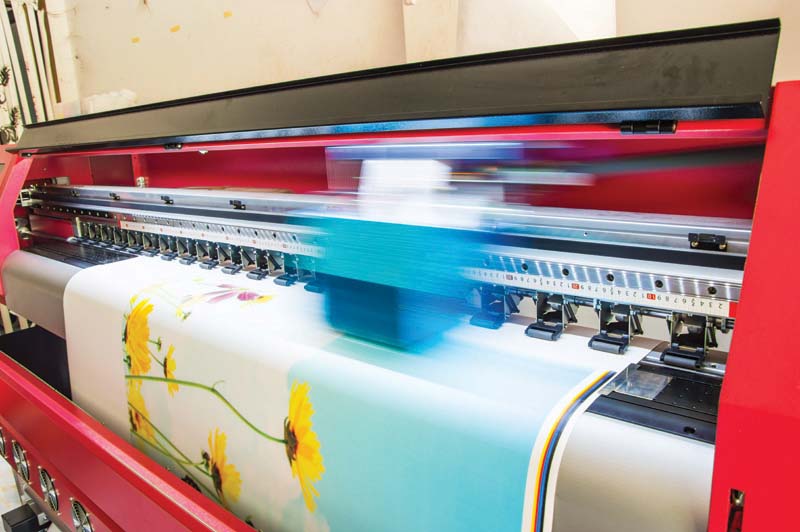 [2]
[2]Printers’ moving parts can pose safety hazards for operators.
File photos
The cost of violations
Following all of the various regulations that can affect the printing industry is a challenging task. For small businesses that do not have enough time or resources to keep up-to-date in implementing them, the task can even seem impossible.
It is essential not to let safety concerns fall to the wayside, however, or there could be significant costs. When safety violations are identified and investigated, businesses are typically fined, either by their provincial safety agency or by the Canadian Centre for Occupational Health and Safety (CCOHS) at the federal level. In the most serious cases, these fines can range from approximately $10,000 to $300,000 or even greater.
Health and safety measures should not only be motivated by a fear of financial punishment. As mentioned earlier, violations can compromise the operational efficiency of a business. Further, employees thrive in environments where they feel safe. In part, this is because they actively appreciate when they feel their company cares about them.
In businesses where there have been many injuries and illnesses, not only do the affected employees often miss work while they are recovering, but employee morale also tends to become much lower, which in turn results in even lower productivity. Keeping a business safe and up to standards, on the other hand, will naturally lead to improvements in productivity and overall employee happiness.
 [3]
[3]Employees thrive in work environments where they feel safe.
Getting off to a good start
Many business owners want to achieve higher safety standards in their workplaces, but simply do not know where to start. With that issue in mind, Workplace Safety North (WSN) and the Specialty Graphic Imaging Association (SGIA) teamed up this spring to help Ontario’s printing community. The two organizations hosted a half-day conference to bring professionals from across the Greater Toronto Area (GTA) together to discuss important regulatory and safety issues.
WSN is a non-profit organization funded through the Ontario Ministry of Labour’s (MOL’s) Workplace Safety & Insurance Board (WSIB). It specializes in providing health and safety training and resources for businesses across a variety of resource-based business sectors, mainly in Northern Ontario, including printing. Its services include expert advice and information, classroom and online training programs, on-site consultations, health and safety audits, industrial hygiene testing and assistance with problem-solving. By way of example, it provides training for working at heights, as is applicable to sign and graphic installation workers.
SGIA, meanwhile, is a trade association representing both screenprinting and digital printing communities around the world. Among its services for members is access to informational resources that are geared specifically toward the needs of the printing industry, including those relating to health and safety in the workplace.
“Workers are an integral part of any business and keeping them safe should always be a top priority,” says Marci Kinter, SGIA’s vice-president (VP) of government and business information. “That’s why we offer resources to help our members navigate the complicated world of safety regulations and learn how to implement their own programs.”
The association has many members in the GTA, so it chose to work with WSN to provide more help to those businesses with regard to safety regulations.
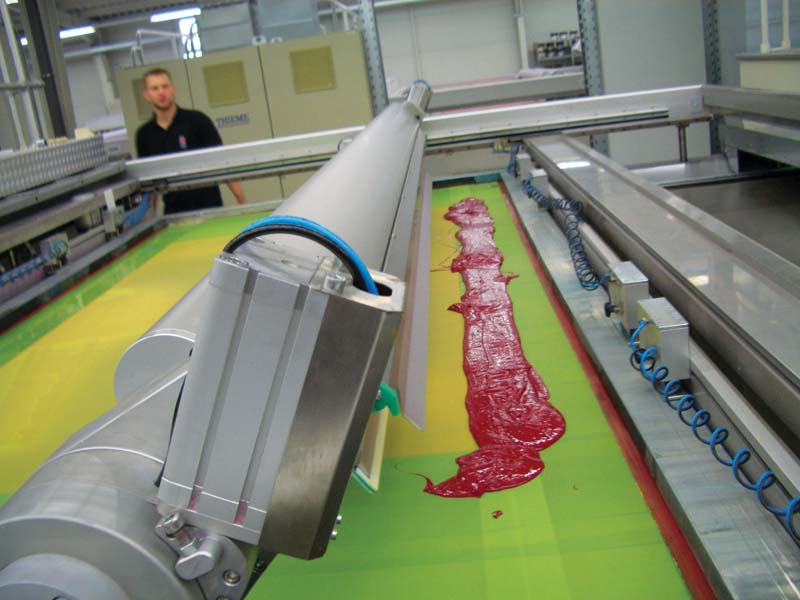 [4]
[4]Many PSPs work with chemicals that may be considered dangerous.
On the safety agenda
SGIA and WSN’s workplace safety conference, sponsored by ND Graphics, was held on June 7 at the Centre for Health & Safety Innovation (CHSI)
in Mississauga, Ont. The agenda featured a breadth of speakers and topics.
Labelling chemicals
Douglas Groff, director of health, safety and environment for Data Communications Management, a PSP and direct marketing company headquartered in Brampton, Ont., discussed labelling requirements for hazardous chemicals, including printing inks.
The requirements for Canada’s national Workplace Hazardous Materials Information System (WHMIS) were updated in 2015 to bring them into synchronization with other regulations around the world, by integrating them with the Globally Harmonized System (GHS), which is supported by the World Health Organization (WHO). The implementation of the Canadian updates began in July 2016 and many provinces are still transitioning their own requirements accordingly.
Groff’s presentation included a review of the main differences between the original version of WHMIS from 1988 and the updates from 2015, including revised pictograms, different hazard classifications and new components of Safety Data Sheets (SDSs), which have replaced the earlier Material Safety Data Sheets (MSDSs). PSPs must comply with these labelling requirements for all inks stored and used in their facilities by the deadline of December 2018.
“People in the industry need to understand the pictograms for hazard classes like acute toxicity and signal words like ‘danger’ and ‘warning,’” he said. “The way chemical hazards are classified has changed.”
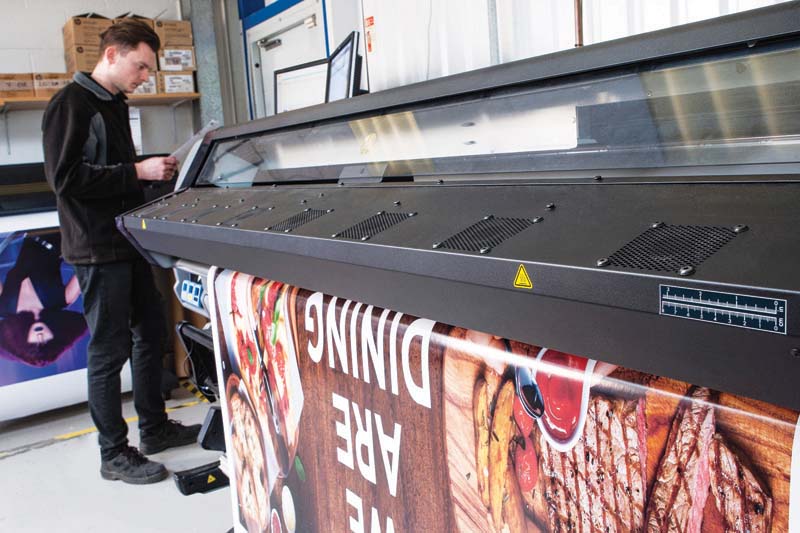 [5]
[5]Wide-format digital inkjet printers require machine guards to keep operators safe.
Photo courtesy HP
Machine guarding, lockouts and tagouts
As mentioned, PSPs also face hazards relating to the machinery they use. It is important to implement machine guarding to prevent severe accidents for operators.
‘Lockout-tagout’ is a safety procedure that involves shutting off such machines and locking down power sources before performing any maintenance on them. The purpose is to prevent anyone else from accidentally starting up the machine, which could in turn harm the maintenance worker who is in direct contact with it.
Many newer machines for the wide-format printing industry come with ‘guard’ features built in. With older equipment that is not up to current regulatory standards, on the other hand, employers must ensure guards are added.
Wendy Nadan, an environment, health and safety (EHS) consultant based in Kitchener, Ont., discussed the importance of lockout procedures in preventing workplace injuries. Her presentation featured an outline of employers’ responsibilities, which include not only making sure the right equipment is installed, but also training employees in the proper use of machinery and providing PPE for them. She reviewed different types of machine guards that are available and how to maintain them.
“Even if the guard came with the equipment, you still need to make sure it’s on and working,” she said. “If any moving part is not guarded and there’s an accident, you’re liable.”
All operator stations must have emergency-stop (e-stop) switches. Any components added to them must have redundant circuits, as the system cannot rely on one wire to work. And operators may not disable or bypass safety switches, no matter how aggravating dealing with them may be.
“There’s always a trade-off between safety and operability,” Nadan said. “Guards block both visual and physical access to prevent operators from coming into contact with points of danger. They need to be put back in place after maintenance.”
Operating her own business, Nadan Consulting, she continues to work with SGIA, having previous experience with the Photo Marketing Association International (PMA) and the Ontario Printing & Imaging Association (OPIA), both of which have been succeeded by the Imaging Alliance. Over that period, Nadan has seen printing equipment evolve, including the related safety precautions.
“There are even ‘light curtains’ today that can sense the presence of objects entering a specified detection zone and stop the machine,” she said. “Manufacturers know they need to design guards to meet prevailing industry standards and offer adequate protection.”
Harassment and violence
Don Suess, a health and safety specialist with WSN, spoke about workplace violence and harassment, including bullying and intimidation.
Ontario’s Occupational Health and Safety Amendment Act (Violence and Harassment in the Workplace), which came into force in June 2010, introduced new requirements for employers to report incidents and new rights for employees to refuse to work under certain negative circumstances. The act addresses both criminal offences like assault and provincial statutes like Ontario’s Human Rights Code and Workplace Safety & Insurance Act, which entitles employees to benefits for mental stress that is an acute reaction to a sudden, unexpected and traumatic event.
Suess encouraged employers to become familiar with the MOL’s website for further details.
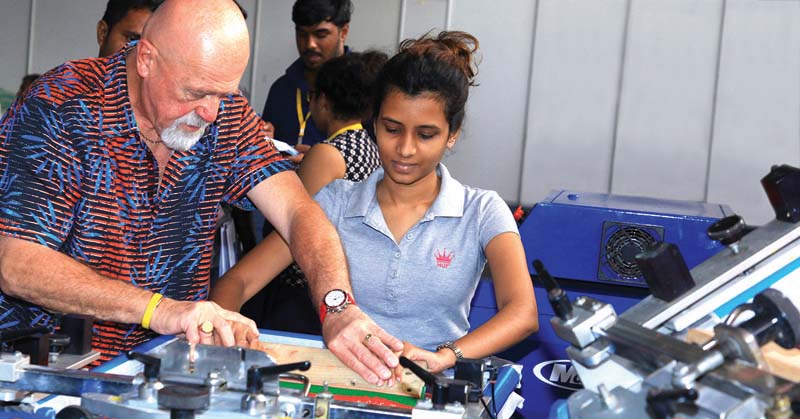 [6]
[6]Employers’ responsibilities training employees in the proper use of machinery.
Photo courtesy SGIA
Workplace injury trends
Tom Welton, an industrial director with WSN, presented a five-year analysis of workplace injuries based on statistical trends. He explained the WSIB categories printing, platemaking and binding as one ‘rate group’ for which it collects data over time.
Most injuries reported in Ontario’s printing sector have affected operators of presses and other machinery. The top concerns include sprained, strained and torn muscles, overexertion and spine and other back injuries.
The discussion also turned to the aging workforce. Labourers in the range of 45 to 54 years old are most likely to suffer these injuries on the job, followed by those aged 35 to 44 and 55 to 64.
“As workers grow older, they face a higher risk of injury or illness in the workplace,” added Ola Sinelnikova, project leader with CBI Workplace Solutions, a health and safety service provider. “This is important to keep in mind as the median age of Canada’s labour force is more than 42 years old and continues to rise. Corporate health and wellness has become an economic imperative.”
Small business challenges
Finally, Joanne Gordon, WSIB’s manager of small business health and safety programs, discussed incentives to help develop effective programs, manage risks and reduce injury and illness costs.
“Critical injuries and even fatalities are disproportionately represented among small businesses,” she said, “so we offer free awareness sessions for small business owners, with consultants providing legislative and certification updates and training.”
An ongoing process
The June workshop was an opportunity for attendees to ask questions pertaining to their specific printing facilities and to network with their fellow business owners, who face the same challenges with respect to safety and health issues in the workplace.
Looking ahead, WSIB will work with both WSN and SGIA to present ‘Building Your Health & Safety Program’ sessions this fall with the printing industry in mind. The goal is to follow up with businesses and make many resources available to help them make improvements with safety as a core component.
Allison Lundy is a regulatory assistant for the Specialty Graphic Imaging Association (SGIA) and oversees its safety recognition program. For more information, visit www.sgia.org[7].
- [Image]: https://www.signmedia.ca/wp-content/uploads/2017/09/hp_printshop2-copy.jpg
- [Image]: https://www.signmedia.ca/wp-content/uploads/2017/09/wideformatprinting-copy.jpg
- [Image]: https://www.signmedia.ca/wp-content/uploads/2017/09/localprintshop-copy.jpg
- [Image]: https://www.signmedia.ca/wp-content/uploads/2017/09/uvcurablesafety-copy.jpg
- [Image]: https://www.signmedia.ca/wp-content/uploads/2017/09/hp_printshop-copy.jpg
- [Image]: https://www.signmedia.ca/wp-content/uploads/2017/09/womeninprinting-copy.jpg
- www.sgia.org: http://www.sgia.org
Source URL: https://www.signmedia.ca/wide-format-printing-addressing-workplace-health-and-safety/